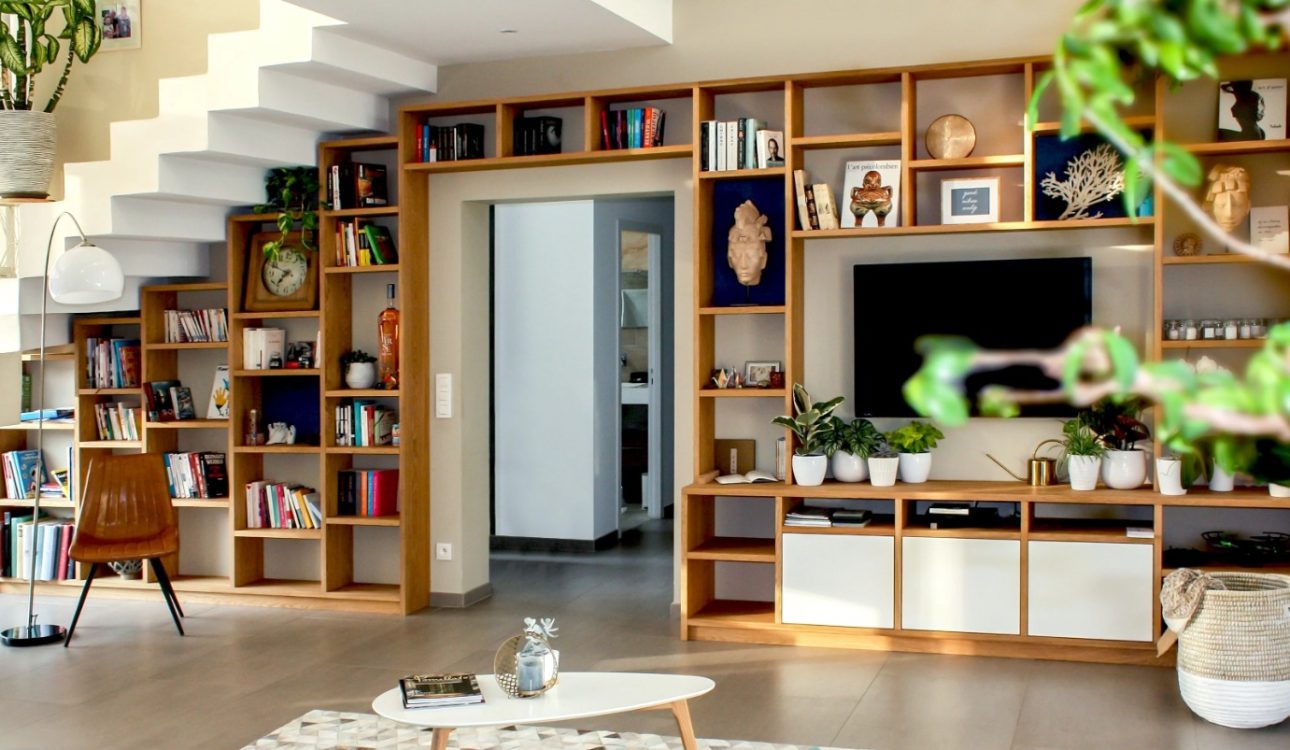Designing a multi-functional space can be both exciting and challenging, especially if you need to maximize functionality without sacrificing style or comfort. Whether you’re working with a small apartment or a room that needs to serve multiple purposes, here are key factors to consider when designing a versatile, multi-functional space:
1. Define the Primary Functions
Start by identifying the main functions the space will serve. For example, will a living room also need to double as a home office or guest room? Pinpoint what activities will take place in the space and prioritize them. Understanding the space’s purpose will guide your decisions on layout, furniture, and décor.
2. Plan for Flexibility
Flexibility is crucial in multi-functional spaces. Choose furniture and elements that can easily transform or serve multiple purposes:
- Modular Furniture: Items like sectional sofas, ottomans, and foldable tables can adapt to different needs.
- Murphy Beds or Sofa Beds: For spaces that need to function as both a living room and a guest bedroom.
- Multi-purpose Desks or Tables: A desk that can also serve as a dining table or workspace.
- Storage Solutions: Furniture that doubles as storage (e.g., storage ottomans, bookshelves, and side tables with hidden compartments) helps keep things organized without clutter.
3. Create Clear Zones
In a multi-functional room, creating distinct zones for different activities helps define the space and makes it easier to switch between functions. You can achieve this through:
- Furniture Arrangement: Positioning furniture to delineate areas (like using a couch to separate a living area from a workspace).
- Area Rugs: Rugs can define different areas within the same room, such as placing one under the coffee table and another under a desk or dining area.
- Room Dividers: Use screens, curtains, or open shelving to create a sense of separation without completely closing off the space.
4. Maximize Vertical Space
When floor space is limited, look up! Use vertical space for storage and organization:
- Wall-Mounted Shelves: Great for books, plants, or decorative items that won’t take up floor space.
- Tall Storage Cabinets or Bookcases: These can help you store items while keeping them accessible.
- Hanging Hooks and Pegboards: Handy for coats, bags, or even organizing small office supplies.
5. Consider Flow and Traffic
Designing a multi-functional space requires careful consideration of flow. Think about how people will move through the space and how different functions will overlap. For example, when you’re using a home office, make sure there’s enough room for someone to walk around without tripping over the desk chair or sofa. A good traffic flow ensures that every function feels seamless and doesn’t create congestion.
6. Choose Neutral or Harmonizing Colors
Neutral or calming colors help unify a multi-functional space, making it feel cohesive despite having multiple uses. Colors like soft grays, whites, or earthy tones can create a harmonious atmosphere. You can add pops of color through accessories (pillows, artwork, or rugs) that you can easily change or remove when the space is being used for different activities.
7. Invest in Good Lighting
Lighting plays a big role in setting the mood and functionality of different areas within the same space. Consider layering different types of lighting to accommodate different activities:
- Ambient Lighting: General overhead lighting for overall brightness.
- Task Lighting: Desk lamps or adjustable reading lights for focused work or reading.
- Accent Lighting: Soft, atmospheric lighting for relaxing areas or to highlight artwork. Make sure to have a mix of dimmable lights to allow flexibility depending on the room’s use.
8. Incorporate Practical, Stylish Storage
Storage is essential in a multi-functional space to prevent clutter from taking over. Look for stylish yet functional options:
- Built-in Storage: Consider built-ins, like cabinets or shelves, that maximize wall space.
- Furniture with Hidden Storage: Coffee tables with storage inside or ottomans that can store blankets or pillows.
- Declutter Regularly: Keep only essential items visible, and store the rest out of sight. This will help maintain a clean, organized space even when it serves multiple functions.
9. Think About Acoustics
When different activities are happening in the same room (like working, watching TV, or hosting guests), consider how sound will travel. Adding rugs, curtains, or soft furniture can help absorb sound and prevent the space from feeling too echoey. You can also consider soundproofing elements if the space is used for tasks that require concentration or privacy.
10. Personalize with Style
Even though the space needs to be functional, don’t forget about style. Make it feel inviting and personalized by adding art, textiles, or accessories that reflect your personality. If the space is constantly changing functions, try to keep your décor flexible and easy to update with your activities. Consider items like foldable art or removable wall decals that can adapt to the space’s transformation.
11. Plan for Easy Transitions
If the space needs to shift from one function to another (like from an office to a living room), choose items that are easy to move, shift, or hide. For example:
- Slipcovers: Slipcovers can quickly change the look of a sofa if needed.
- Foldable Furniture: Chairs or tables that can be easily moved or collapsed.
- Storage Bins or Baskets: Use these to quickly stow away items when the space needs to be rearranged.
Designing a multi-functional space requires balance, flexibility, and creativity. By planning carefully and choosing the right furniture and design elements, you can make a room work for multiple uses without compromising on comfort or style. Are there specific activities you’re hoping to fit into the space, like a home office or guest area?

